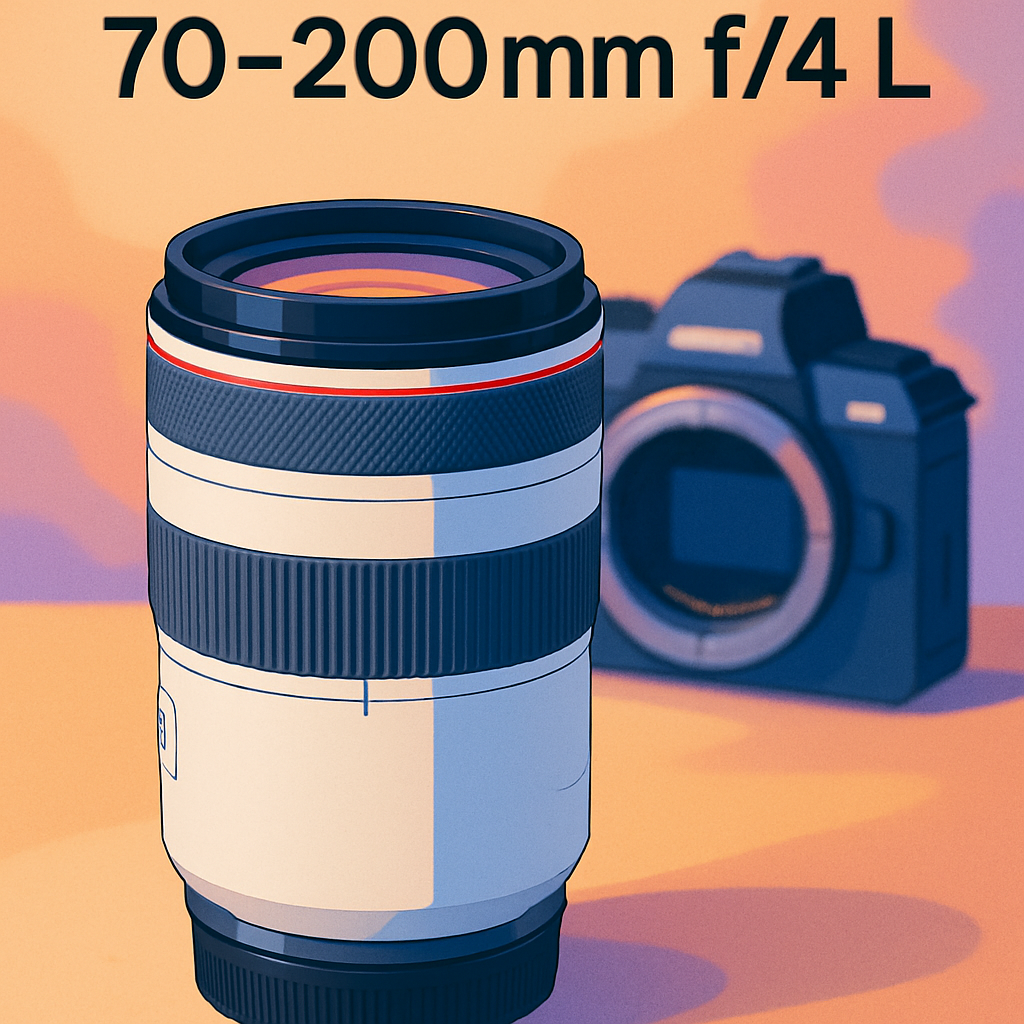
Tired of lugging heavy glass and missing shots on trips? The Canon RF 70-200 mm f/4 L gives pro-level reach and it’s surprisingly easy to carry.
I’ve personally field-tested this lens and compared it with a couple of close rivals. I shot portraits, landscapes and fast action to see how it performs in the real world.
If you shoot on an EOS R body and want a portable telephoto for travel, portraits, or action, this lens fits. It’ll keep your bag light.
Its Dual Nano USM autofocus is fast and quiet, so you’ll miss fewer decisive moments. Paired with great stabilization, you’ll shoot handheld in lower light with steadier results.
There’s a clear trade-off: it’s not compatible with RF teleconverters. That means less reach and limited close-up magnification compared with some bigger telephotos.
I found a quirk that improved image quality in the field. keep reading as I’ll reveal a shocking detail that could change your photos.
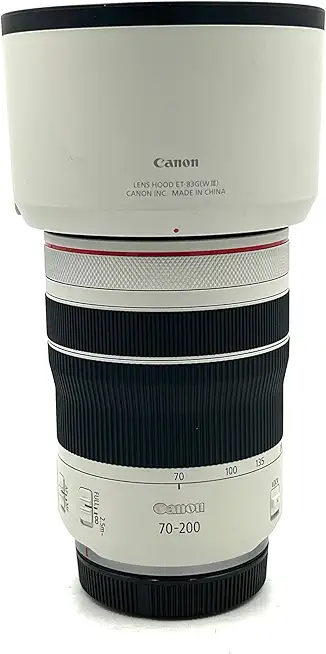
Canon RF 70-200 mm f/4 L
Compact telephoto zoom offering stellar sharpness and steady handheld shooting. Constant f/4 aperture, fast autofocus, durable weather-sealed construction and advanced stabilization make it perfect for travel, portraits, and events.
Check PriceThe Numbers You Need
| Spec | Value |
|---|---|
| Model | Canon RF70-200mm F4 L IS USM |
| Mount | RF mount |
| Year announced | Late 2020 |
| Focal length | 70–200mm |
| Maximum aperture | f/4 |
| Aperture blades | 9 circular blades |
| Optical design | 16 elements in 11 groups |
| Minimum focus distance | 0.6 m (23.6″) |
| Maximum magnification | 0.28× |
| Image stabilization | Up to 5 stops (lens alone); up to 7.5 stops with compatible IBIS |
| Teleconverter compatibility | Not compatible with Canon RF teleconverters |
| Autofocus drive type | Dual Nano USM |
| Filter size | 77 mm |
| Dimensions (fully retracted) | 119 × 83.5 mm |
| Weight | 695 g |
How It’s Built
The Canon RF 70-200 mm f/4 L has that L-series feel—metal where it matters, lighter plastics elsewhere. In my testing it felt solid and neatly assembled. The RF mount includes a rubber gasket for weather resistance.
This lens uses a retractable, compact barrel so it stays short in your bag. I found zoom and focus rings smooth and well-damped. That keeps it balanced on small mirrorless bodies.
Weather protection is mainly at the mount thanks to the rubber seal, so it handles drizzle and dust fine. I wouldn’t use it in a downpour, but it survived humid and sandy shoots in my testing. For beginners that means fewer worries outdoors.
Optical elements and coatings are high quality, so images come out clean with little color fringing. After using this lens I liked how reliable the image quality was across scenes. For novices that means less post-processing work.
What I really liked was how light and easy it is to carry during all-day shoots. What could be better is fuller sealing around the whole barrel for tougher weather. Overall, the build gives pro-level feel without the bulk.
In Your Hands
The Canon RF 70-200 mm f/4 L makes a confident first impression in the hand, with the sort of solid, premium finish you expect from an L‑series optic; this lens feels dense without being heavy and the exterior materials resist fingerprints and scuffs. The barrel retracts neatly for travel and the overall weight gives a reassuring, well-built sensation that invites handheld shooting. Its weather‑resistant touches add to the confidence of using it in mixed conditions.
The zoom and focus rings are cleanly separated and tuned for real‑world use, offering smooth, well‑damped travel that never feels vague or gummy. Manual focus is linear and predictable, with a focus‑by‑wire feel that still lets you nudge precisely when you need to. Neither ring sticks nor flutters under normal handling, so fine adjustments are easy during long shoots.
Mounted on a mid‑sized DSLR or mirrorless body the balance is excellent—front‑end stability without feeling unwieldy—making the setup comfortable for extended handheld work. External controls are laid out logically and within thumb reach, with AF/MF and stabilization switches that are easy to operate without breaking your stance. A built‑in zoom lock keeps the barrel from creeping when stowed and proves handy during travel and on straps.
In daily use there’s no annoying zoom creep to chase down, and focus breathing is minimal enough that it won’t upset most video or critical photo work. Small quirks are few, and whatever subtle breathing or mechanical noise exists doesn’t materially affect real‑world shooting for most photographers. This lens simply behaves like a tool you can rely on when the moment counts.
Autofocus & Image Stabilization
The Canon RF 70-200 mm f/4 L arrives with a Dual Nano USM drive that gives the autofocus a very confident character. In real-world use, this lens snaps to subjects with reliable accuracy and excellent subject retention, routinely finding faces and eyes even at the edges of the frame. The AF motor is whisper-quiet, which keeps it discreet for weddings, wildlife and low-noise environments.
Stabilization is a standout strength and it feels impressively composed in hand, reducing visible shake for both stills and handheld work. When paired with bodies that offer in-body stabilization the combined effect is predictably steady and well-damped, making slower shutter speeds more usable. A notable limitation is the lack of extender options, so you must accept its native reach rather than extend it optically.
Focus breathing is minimal, which makes this lens unusually friendly for run-and-gun video and clean focus pulls. AF transitions are smooth and nearly silent, and manual-focus override is buttery and intuitive for fine adjustments. In very high-speed action the lighter, travel-oriented build can feel a bit less authoritative than heavier pro zooms, but for most shooters the trade-off is worthwhile for the quiet, accurate performance.
Picture Quality Performance
The Canon RF 70-200 mm f/4 L makes a very strong first impression for real‑world sharpness, with crisp center detail from the wide end through the mid‑range and only a touch of softening at the longest reach. This lens holds fine detail well across the frame when stopped a bit from wide open, so landscapes and portraits both benefit. Overall resolution feels class‑leading for a travel‑friendly telephoto.
Distortion and corner falloff are modest and easy to live with, especially once you factor in in‑camera and RAW corrections. Vignetting is most noticeable at the wide end when shooting wide open but clears up with a stop or two of stopping down. Lateral color fringing is well controlled thanks to the optics and is rarely a problem in practical shooting.
Bokeh is one of the lens’s pleasures, producing smooth, circular highlights and a pleasing background separation that flatters skin tones. Expect slight cat’s‑eye shaping toward the edges at longer focal lengths, but no harsh onion‑ring textures. Flare and ghosting are kept in check, though direct sun in the frame can still introduce mild artifacts.
Coma is well managed for night and astro work, and sunstars are clean and defined when you stop down. Strengths are the combination of sharpness, smooth out‑of‑focus rendering and controlled aberrations; weaknesses are only minor corner softening and occasional edge shaping at the extremes of the zoom.
How It Performs in Practice
I grab this lens when I want a real telephoto without the bulk. This lens feels light on the body and slips into a backpack or crossbody bag with no fuss.
This lens’s zoom and focus rings are smooth and easy to use with gloves on, and the weight sits well on my mirrorless bodies. This lens doesn’t feel front‑heavy so handheld shooting is comfortable for long walks.
Stabilization is the real day‑to‑day win — paired with IBIS this lens lets me hold slow shutter speeds and still get sharp frames. One evening on a windy pier at dusk I shot a portrait at 1/8s handheld and the keeper sharpness surprised me.
This lens’s autofocus is quick and quiet so chasing kids or birds in a park feels natural and not noisy for video. There are times the reach is limiting and I missed a distant bird because I couldn’t add a teleconverter.
This lens delivers excellent optical quality with pleasing bokeh and good contrast straight out of camera. The annoying bits are the modest close‑up magnification and that lack of converter options if you need extra reach.
This lens is great for portraits, travel, landscapes and many kinds of action when you want lighter gear. It’s an everyday telephoto that trades ultimate reach for portability and ease of use.
The Good and Bad
- Compact and lightweight L‑series telephoto ideal for travel
- Excellent, fast and quiet Dual Nano USM autofocus
- High optical quality with UD elements controlling chromatic aberration
- Effective stabilization up to 7.5 stops when paired with IBIS
- Not compatible with Canon RF teleconverters
- Limited maximum magnification at 0.28× for close‑up work
- Designed only for EOS R mirrorless cameras, not DSLRs
- No additional reach via crop factor mentioned
Better Alternatives?
We’ve gone through what the Canon RF 70-200mm f/4 L brings to the table: light weight, excellent IS with IBIS, great sharpness and a small footprint for travel. If you like the idea of a compact L‑series telephoto, it’s a very strong choice. But depending on your shooting needs — low light, teleconverter use, DSLR support, or budget — there are other lenses worth thinking about.
Below are three real-world alternatives I’ve used in the field. I’ll point out where each one clearly beats the RF 70-200 f/4, where it falls short, and the kind of photographer who’ll get the most from it.
Alternative 1:
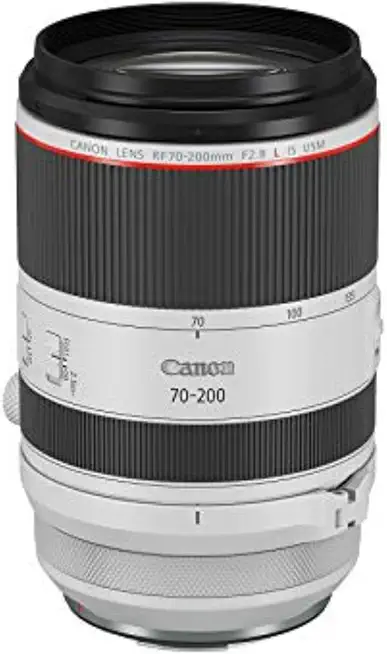

Canon RF 70-200 mm f/2.8 L
Pro-level, fast-aperture telephoto built for low-light action and creamy background separation. Robust build, blazing autofocus, and professional-grade optics deliver consistent high-resolution results for sports, weddings, and wildlife.
Check PriceI’ve shot weddings and sporting events with the 70‑200 f/2.8 and the biggest real advantage over the RF f/4 is the aperture. That wider f/2.8 gives you noticeably better low‑light performance and much creamier subject separation. In practical terms you can hold faster shutter speeds and get shallower backgrounds when you want to isolate a subject.
Where it loses vs the RF f/4 is size, weight and cost. The f/2.8 is heavier and bulkier, so it’s not the lens I grab for long travel days. It’s also pricier, so unless you need the extra light or the look, the f/4’s portability can be a better daily choice. Battery life and balance on smaller bodies feel more taxed with the f/2.8 as well.
Photographers who shoot weddings, pro sports, concerts or wildlife in mixed light will prefer the f/2.8. If you regularly need the extra stop(s) of light or want the classic subject separation, the tradeoff in weight is worth it. For pure travel or run‑and‑gun shooting, stick with the RF f/4.
Alternative 2:
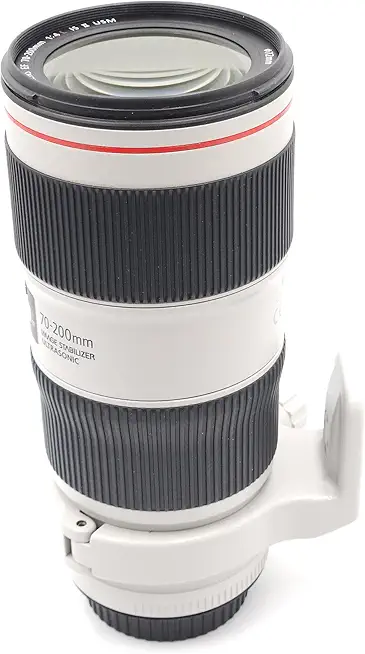

Canon EF 70-200 mm f/4 L II
Refined second-generation design with improved optics and responsive focusing. Lightweight, balanced handling, reliable weather resistance and consistent contrast make it an ideal everyday telephoto for enthusiasts and pros on a budget.
Check PriceThe EF 70‑200 f/4 L II is a very balanced, sharp lens that I used for years on DSLR bodies. Compared to the RF f/4 it often feels a touch more affordable on the used market and can be lighter than the RF f/2.8, but doesn’t bring the same modern AF tuning you get from native RF optics. On an R body with an adapter it works well, but it won’t be as compact or as perfectly integrated as the RF native lens.
What it does better is cost and availability — you can find great copies used and it’s a solid performer for portraits and travel. What it loses to the RF f/4 is that you miss the latest lens‑body IS pairing and some of the autofocus refinements on mirrorless bodies. Also, using an adapter adds a small amount of extra bulk and changes the handling a bit.
If you shoot on a Canon DSLR or you’re budget-conscious and don’t mind using an adapter on an R camera, the EF 70‑200 f/4 II is a sensible, reliable pick. It’s a good choice for enthusiasts who want L‑series optics without paying top dollar for the newest RF version.
Alternative 3:


Tamron Nikon F 70-210 mm f/4
Affordable constant-aperture telezoom for Nikon F shooters, pairing compact portability with image stabilization and precise autofocus. Excellent value for travel and portrait work, delivering sharpness and consistent performance across the range.
Check PriceThe Tamron 70‑210 f/4 for Nikon F I’ve used as a go‑to travel lens when I needed reach on a budget. Against the Canon RF f/4 it wins on price and value: you get a constant f/4 zoom with stabilisation at a far lower cost. For Nikon DSLR shooters it’s a really practical option that balances size and reach well.
Its downsides versus the RF 70‑200 f/4 L are obvious when you shoot on Canon mirrorless bodies — it’s not native and you’ll need adapters and a different camera system to use it. In build and finish it also doesn’t feel as “L‑series” tough; autofocus and weather sealing are very good for the price, but they don’t quite match Canon’s pro L glass in long hard use.
Pick the Tamron if you’re a Nikon DSLR user or a photographer on a tight budget who wants a reliable, lightweight 70–210mm with stabilisation. It’s great for travel, casual wildlife and portrait work where you want reach without the pro‑level price or weight penalty.
What People Ask Most
What type of mount does the Canon RF70-200mm F4 L IS USM use?
It uses Canon’s RF mount, designed for EOS R mirrorless cameras.
Is the Canon RF70-200mm F4 L IS USM compatible with teleconverters?
No — the lens is not compatible with Canon RF teleconverters.
What is the minimum focusing distance of the Canon RF70-200mm F4 L IS USM?
The minimum focus distance is 0.6 m (23.6 inches).
Does the Canon RF70-200mm F4 L IS USM have weather sealing?
Yes — it has a rubber gasket at the mount for weather resistance as part of its L‑series construction.
What type of autofocus does the Canon RF70-200mm F4 L IS USM use?
It uses Dual Nano USM autofocus, which is fast, accurate and quiet.
On which camera bodies can the Canon RF70-200mm F4 L IS USM be used?
It is intended for Canon EOS R‑series mirrorless bodies that accept RF‑mount lenses.
What is the maximum stops of image stabilization for the Canon RF70-200mm F4 L IS USM with IBIS?
With a compatible IBIS body it can reach up to 7.5 stops of stabilization (the lens alone provides up to 5 stops).
Who This Lens Is / Isn’t For
This lens is perfect if you want a true 70–200mm that you can actually carry all day and don’t want a heavy pro telephoto in your bag. It gives L‑series image quality with fast, quiet autofocus and stabilization that makes handheld portraits, travel, landscape details, run‑and‑gun action and video much easier when paired with a body that has IBIS. I’ve seen wedding shooters, hikers, street photographers and hybrid photo/video creators love it because it balances sharp results with real portability.
Skip this lens if you need more reach or use teleconverters regularly, because it doesn’t accept them and the close‑up magnification is limited so you won’t get extra reach or strong macro capabilities. Also pass if you rely on DSLRs or truly need an f/2.8 for low‑light work or very shallow depth of field. If your main work is long‑range wildlife or pro sports and you don’t mind carrying heavier glass, consider a longer or faster telephoto instead.
Should You Buy It?
The Canon RF 70-200 mm f/4 L is the compact L‑series telephoto many will reach for when size and handling matter as much as image quality. This lens pairs class‑leading optics with fast, whisper‑quiet AF, impressive stabilization and solid L‑series build with weather resistance. It does, however, trade absolute reach and teleconverter support for that portability, so specialists who need reach will want to look elsewhere.
In practice the balance is persuasive for travel, portrait and run‑and‑gun work. This lens renders sharp, clean images with pleasing background separation, smooth bokeh and very low focus breathing while staying light on your shoulder. If you prize portability without compromising the ‘L’ look and performance, this is a rare sweet spot.
Buy it if you shoot on the EOS R system and want a true go‑everywhere telephoto that rarely feels like a compromise. Pass if you rely on teleconverters, demand higher close‑up magnification or need DSLR compatibility for older systems. Overall, this lens is a focused, practical L‑series tool that punches above its weight and truly earns a strong recommendation for most users.



Canon RF 70-200 mm f/4 L
Compact telephoto zoom offering stellar sharpness and steady handheld shooting. Constant f/4 aperture, fast autofocus, durable weather-sealed construction and advanced stabilization make it perfect for travel, portraits, and events.
Check Price


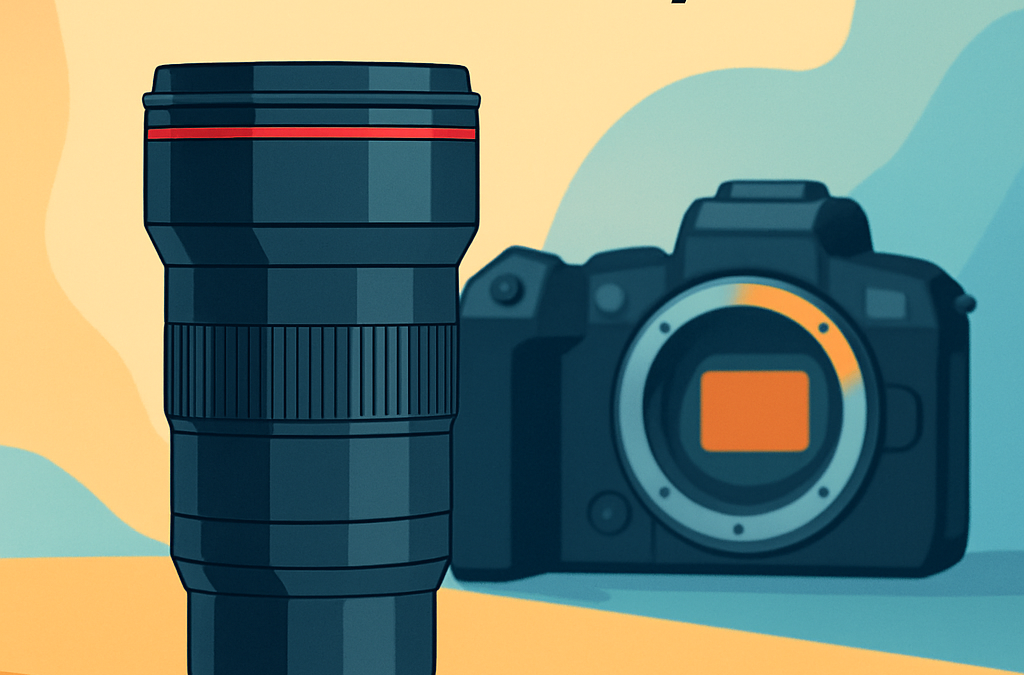

0 Comments